Minimalist architecture design is not just about appearances—it’s a way of life. It focuses on removing unnecessary things and keeping only what is useful.
The goal is to create calm and practical rooms and buildings. Minimalist design focuses more on purpose than just making things look nice. Nowadays, many people enjoy its simple beauty.
What is Minimalist Architecture?
It is focused on simplicity. The spaces feel clean and clutter-free. You won’t see fancy trim or decoration in minimalist rooms.
Don’t confuse “simple” with “boring,” though! Minimalist buildings can still look fabulous. The trick is removing excess stuff without making rooms feel cold or unwelcoming.
Picture a space with huge windows, smooth walls, and just a few pieces of furniture.
Key Features of Minimalist Architecture Design
Here are the main things you’ll notice in minimalist architecture:
- Simple shapes – no fancy angles or details
- Open floor plans – rooms feel free of clutter
- Lots of natural light – huge windows everywhere
- Neutral colors – whites, grays, natural wood tones
- Natural materials – wood, glass, concrete, stone
- Functional design – every part has a purpose
Why Minimalism is So Popular
Why has this no-frills approach become so popular? Well, life today is loud and chaotic. Our homes can sometimes feel just as messy as our brains!
Minimalist spaces offer an escape from that. Surrounding yourself with just the basics you need and love creates a sense of calm. With everything having its place, you feel more focused and intentional in how you live. And who wouldn’t want that?
The History of Minimalist Architecture
Minimalist architecture blew up in the early 1900s, but people were into the “less is more” thing before that. They were minimal, like those sleek Japanese houses with clean lines and natural materials.
In the 1920s, big-shot started testing these no-fuss, zero-clutter builds. Their work paved the way for the minimalist movement as we know it.
In the 1960s and 1970s, minimalism was trending in art, design, and everything else. People were over the whole “more is better” thing, so the focus shifted to keeping it simple instead. Minimalist architecture took off across the globe. Nowadays, you see it everywhere.
The Core Principles of Minimalist Design
These core principles:
1. Simplicity in Form and Function
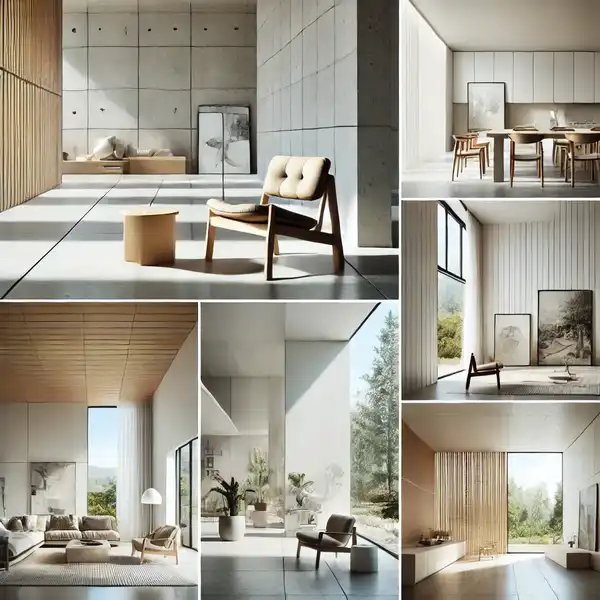
Architects nix unnecessary details and stick to clean lines and open spaces instead. Rooms must serve a clear purpose – nothing’s getting added just for cute.
Don’t get it twisted, though—a minimalist space isn’t empty. It’s filled with the essentials, and everything has to have a function. For example, a simple chair is not just a place to sit—its shape also looks dope.
2. Open Spaces
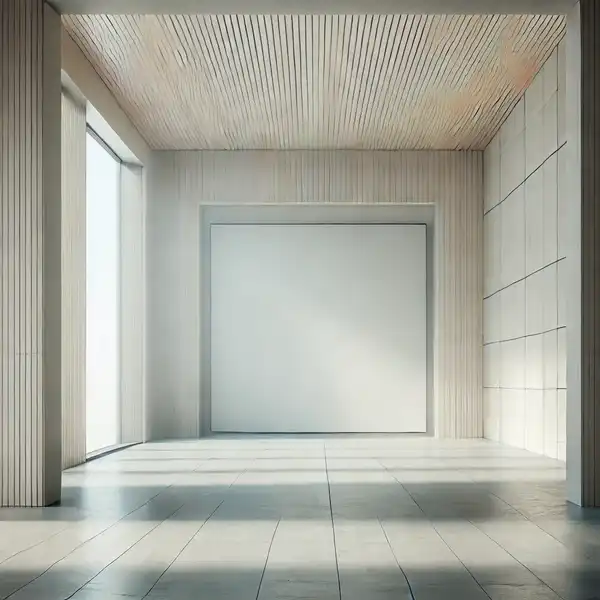
Minimalist architecture values generous spaces. Rooms feel airy and spacious, with plenty of room to spread out. The goal is to maximize that ~freedom of motion~ vibe.
Open spaces also let in fab natural light, which brings me to another critical element…
3. Use of Natural Materials
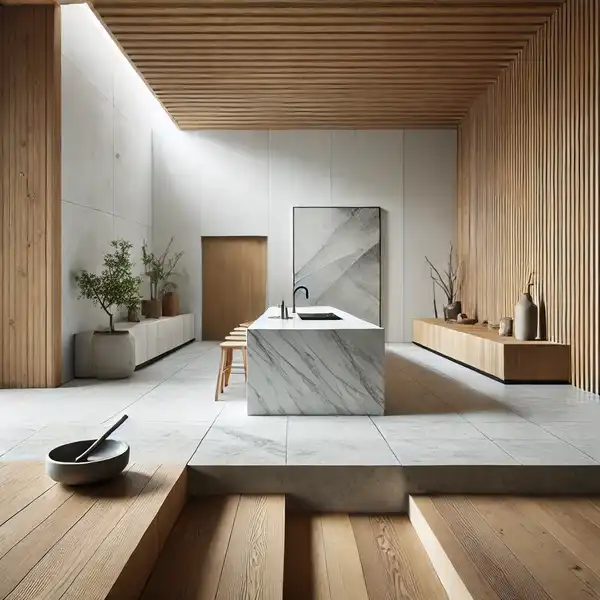
In minimalist design, natural materials like wood, stone, and glass. They add warmth and texture while keeping things clean and simple.
Natural materials also help the building blend with its surroundings. For example, an airy mountain minimalist house might incorporate local stone to complement the overall landscape.
4. Neutral Color Palette
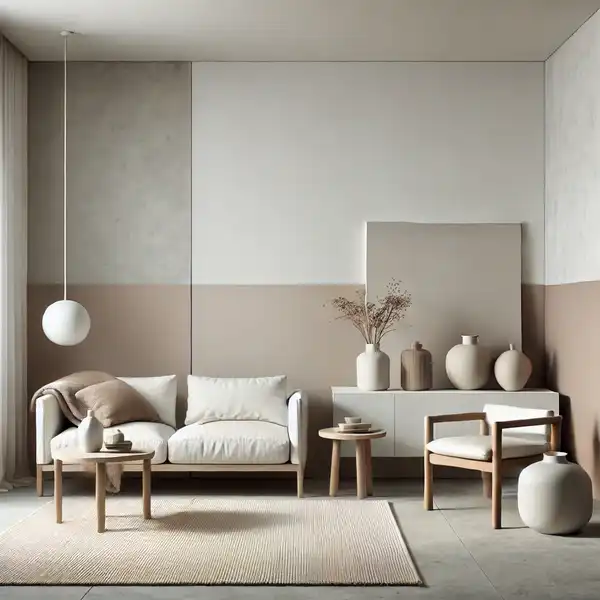
Minimalist architecture typically sticks to neutral. They keep things calm and serene. The point is to let the design speak for itself rather than flashy paint choices.
5. Light as a Design Element
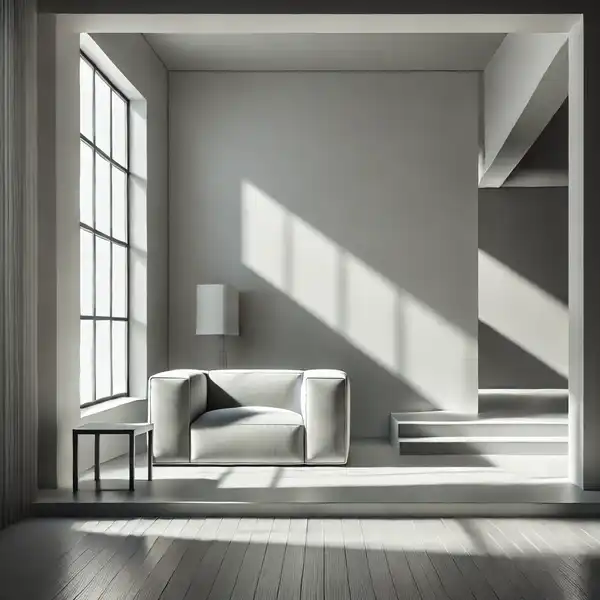
Lighting is make-or-break for minimalist architecture. Big windows give that natural light the spotlight to highlight a space’s simplicity. Light and shadow can also draw the eye, adding depth.
How to Achieve Minimalism in Your Home
You don’t have to be an architect to make your home feel basic. Whether you’re building new or just changing up a room, there are some easy ways to keep things simple.
Here are a few tips:
1. Toss the Clutter
Start by getting rid of stuff you don’t need. Mess is the enemy of simplicity. Keep only what’s essential or makes you happy. Give away, sell, or recycle the rest.
2. Pick Plain Furniture
Look for pieces that can be used for more than one purpose. For example, a coffee table you can store things on can help keep the living room organized.
3. Use Natural Materials
Bring in natural stuff like wood, stone, and cotton. These add warmth without being too much.
4. Let Sunlight In
Maximize the natural light by keeping windows clear. Think about adding mirrors to reflect more light.
5. Stick to Neutral Colors
Choose soft wall colors, furniture, and decor. This creates a calming mood and makes spaces feel more open.
Comparing Simple Design to Other Kinds
How is basic architecture different from other types? Let’s compare it to some common kinds:
| Style | Key Features | How It Differs from Minimalism |
| Traditional | Ornate details, rich colors, heavy furniture | Minimalism focuses on simplicity and clean lines, while traditional design often uses intricate details. |
| Modern | Sleek lines, bold colors, open spaces | Modern design can include bold and artistic elements, while minimalist design focuses more on function and simplicity. |
| Industrial | Exposed beams, raw materials, dark colors | Industrial design is often more rugged and raw, while minimalism uses more natural and neutral tones. |
| Bohemian | Eclectic, colorful, lots of patterns | Minimalism avoids clutter and excess, while bohemian design embraces a mix of styles and patterns. |
The Good Stuff About Minimalist Design
Minimalism helps people let go of stuff they don’t need. Getting rid of clutter makes room for what matters. Less stuff equals less mess, which is relaxing.
Here are some reasons people dig minimalism:
- Ditches distractions, keep it simple
- Invest in quality over quantity
- Easier to clean – less work!
- Eco-friendly – uses less “stuff.”
The Future of Minimalist Architecture
This isn’t just a trend—minimalism is here to stay. This look will become even more popular as people want simplicity and green living.
In the future, expect extraordinary innovations like:
- Eco materials
- The smart home tech that keeps it simple
Minimalism isn’t about having less stuff. It’s about making spaces chilled out and functional. Focusing on simple designs, natural light, and open spaces helps people live intentionally and enjoy their surroundings.
Whether building a new crib or just de cluttering the living room, minimalism creates peace. It might even make you happier! So why give it a try?